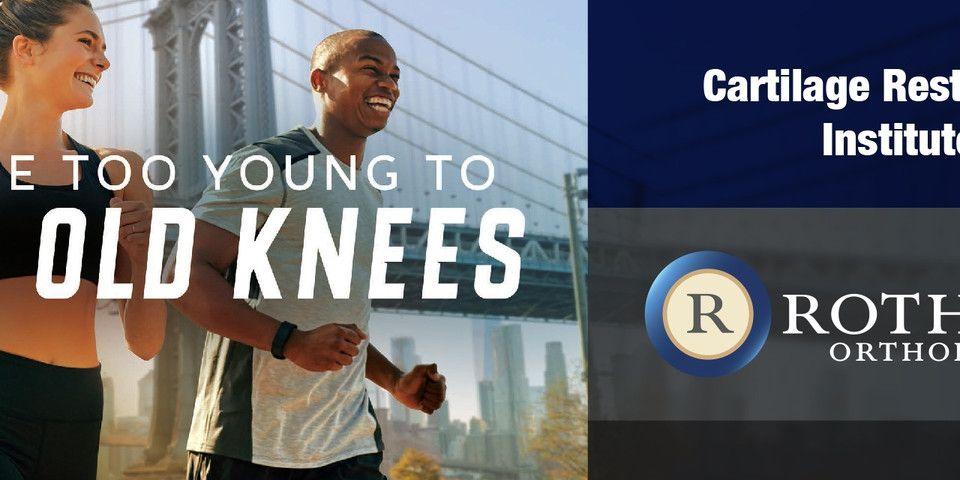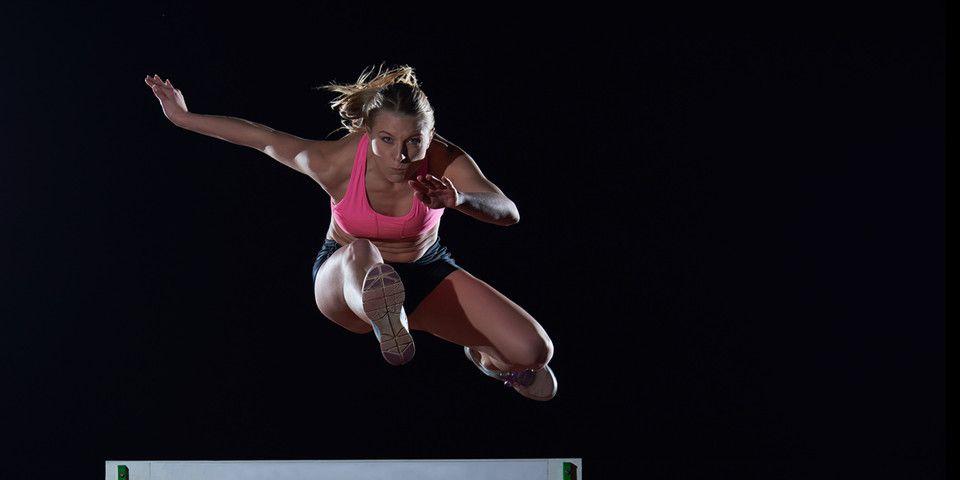Your Options for Cartilage Restoration Treatment in Montvale
Expert Cartilage Restoration Treatment in Montvale, NJ Is Found at Rothman Orthopaedic Institute
Knee cartilage damage, especially for those that are very active, is a common cause of pain and decreased functionality. Unfortunately, cartilage does not heal well on its own and usually requires surgical intervention. However, if cartilage restoration is performed early enough, it can allow patients to regain functionality and prevent or delay further complications down the line, such as arthritis or the need for joint replacement surgery.
Treatment techniques are still evolving, but there are many options currently available for cartilage restoration treatment in Montvale, NJ. An in-depth consultation with the knee and Sports Medicine specialists at Rothman Orthopaedic Institute will be able to determine which cartilage restoration treatment is right for you. Before heading into a professional consultation, it’s great to read up and be as knowledgeable on the subject matter as you can. Below, we’ll delve into the basics of cartilage damage and the different treatment options currently available.
Knee Cartilage Damage Basics
Three bones comprise the knee joint: the femur (thighbone), the tibia (shinbone), and the patella (kneecap). Articular cartilage is the smooth, white tissue that covers the ends of the bones where they come together to form joints. Cartilage allows our bones to easily glide past one another with minimal friction. Hyaline cartilage is a tissue that mainly comprises the joint surface. When cartilage is damaged, the surface is no longer smooth, causing friction and pain when the bones move past each other.
There are two main causes of cartilage damage: an injury or normal “wear and tear.” Meniscal and ligament tears are often accompanied by cartilage damage.
Cartilage damage can sometimes be difficult to diagnose. Hyaline cartilage does not contain calcium, so it cannot be seen on an X-ray image.
Knee Cartilage Restoration Treatment Options
Surgical cartilage restoration treatment is most successful in younger adults with a single injury. Most cartilage restoration surgeries can be done arthroscopically, which is a minimally-invasive surgical technique that uses small incisions. Depending on a number of patient factors though, the surgeon may require more direct access to the damage, meaning open surgery will be selected. There are six main techniques for cartilage restoration:
-
Microfracture
The goal of microfracture treatment is to stimulate new articular cartilage growth via the creation of a new blood supply. First, damaged cartilage is removed. Then, a sharp tool called an awl is used to make holes in the subchondral bone (the bone beneath the cartilage). This stimulates blood via a healing response, allowing new blood to reach the joint surface. The blood will provide new cells to the joint surface, allowing for the production of new cartilage. -
Drilling
Like microfracture treatment, drilling stimulates the production of healthy, new cartilage via the creation of holes in the subchondral bone. The only difference is drilling utilizes a surgical drill or wire. Drilling is generally recognized as being less precise than microfracture. -
Abrasion Arthroplasty
This technique is also very similar to drilling and microfracture. Again, the only difference is the tool utilized to remove the damaged cartilage and create the holes in the subchondral bone. Abrasion Arthroplasty uses high-speed burrs. -
Autologous Chondrocyte Implantation
This is a two-step process. First, healthy cartilage is arthroscopically harvested from a non-weight bearing area of the bone. The healthy cartilage cells (called chondrocytes) are then sent to a laboratory, where they are cultured and grown over a three to five-week period. Next, the newly-grown cells are implanted via open surgery. During this part of the surgery, a layer of periosteum (bone-lining tissue) is sewn over the defected cartilage area and sealed with fibrin glue. The newly-grown cells are then injected into the area under the periosteal covering. -
Osteochondral Autograft Transplantation
This procedure involves transferring healthy cartilage from one part of the joint to another. The healthy cartilage tissue (graft) is taken as a cylindrical-shaped plug from a non-weight bearing area of bone and then impacted into the defected cartilage area. A single plug or multiple plugs may be taken depending on the damage. -
Osteochondral Allograft Transplantation
When the cartilage defect is very large, Osteochondral Allograft Transplantation is performed. It is the same as the Osteochondral Autograft Transplantation procedure, except that the healthy cartilage tissue is harvested from a cadaver/donor and formed into the exact shape of the defect.
No matter which procedure you undergo, it is vital that you follow your doctor’s rehabilitation plan precisely in order to ensure the best chances for a successful recovery.
Rothman Orthopaedic Institute is the premier source for cartilage restoration treatment in Montvale, NJ. To schedule an appointment, click here or contact us at 1-800-321-9999.
Related Specialties
Related Conditions
Related Treatments
Related Programs
-

Cartilage Restoration Institute
This is a center where patients can go to have their disabled joint biological resurfaced, realigned, and stabilized without having the joint replaced by artificial materials such as metal and plastic. It is well known that the outcomes of patients under the age of 50 undergoing artificial joint replacement are not as good as we would like. Therefore we feel the future of Orthopaedics is to try to restore a joint back to its original anatomy by realignment, ligament reconstruction, and cartilage restoration.Read More -

Women’s Sports Medicine Program
The Women’s Sports Medicine Program at the Rothman Orthopaedic Institute is the first of its kind in the Philadelphia metro area and one of only several such programs specializing in the comprehensive care of the female athlete in the country.Read More




